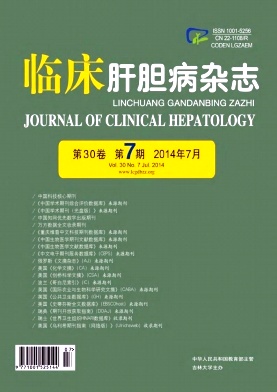|
[1]European Association for the Study of the Liver.EASL clinical practice guidelines on the management of ascites, spontaneous bacterial peritonitis, and hepatorenal syndrome in cirrhosis[J].J Hepatol, 2010, 53 (3) :397-417.
|
|
[2]RUNYON BA, AASLD.Introduction to the revised American Association for the Study of Liver Diseases Practice Guideline management of adult patients with ascites due to cirrhosis 2012[J].Hepatology, 2013, 57 (4) :1651-1653.
|
|
[3]MOORE KP, WONG F, GINES P, et al.The management of ascites in cirrhosis:report on the consensus conference of the International Ascites Club[J].Hepatology, 2003, 38 (1) :258-266.
|
|
[4]REYNOLDS TB, LIEBERMAN FL, GOODMAN AR.Advantages of treatment of ascites without sodium restriction and without complete removal of excess fluid[J].Gut, 1978, 19 (6) :549-553.
|
|
[5]GAUTHIER A, LEVY VG, QUINTON A, et al.Salt or no salt in the treatment of cirrhotic ascites:a randomised study[J].Gut, 1986, 27 (6) :705-709.
|
|
[6]GUEVARA M, CARDENAS A, URIZ J, et al.Prognosis in patients with cirrhosis and ascites[M]//GINS P, ARROYO V, RODS J, et al.Ascites and renal dysfunction in liver disease:pathogenesis, diagnosis and treatment.Malden:BlackwellPublishers, 2005:260-270.
|
|
[7]SERSTT, GUSTOT T, RAUTOU PE, et al.Severe hyponatremia is a better predictor of mortality than MELDNa in patients with cirrhosis and refractory ascites[J].J Hepatol, 2012, 57 (2) :274-280.
|
|
[8]SANTOS J, PLANAS R, PARDO A, et al.Spironolactone alone or in combination with furosemide in the treatment of moderate ascites in nonazotemic cirrhosis.A randomized comparative study of efficacy and safety[J].J Hepatol, 2003, 39 (2) :187-192.
|
|
[9]ANGELI P, FASOLATO S, MAZZA E, et al.Combined versus sequential diuretic treatment of ascites in non-azotaemic patients with cirrhosis:results of an open randomised clinical trial[J].Gut, 2010, 59 (1) :98-104.
|
|
[10]BERNARDI M.Optimum use of diuretics in managing ascites in patients with cirrhosis[J].Gut, 2010, 59 (1) :10-11.
|
|
[11]WONG F, WATSON H, GERBES A, et al.Satavaptan for the management of ascites in cirrhosis:efficacy and safety across the spectrum of ascites severity[J].Gut, 2012, 61 (1) :108-116.
|
|
[12]DAHL E, GLUUD LL, KIMER N, et al.Meta-analysis:the safety and efficacy of vaptans (tolvaptan, satavaptan and lixivaptan) in cirrhosis with ascites or hyponatraemia[J].Aliment Pharmacol Ther, 2012, 36 (7) :619-626.
|
|
[13]TORRES VE, CHAPMAN AB, DEVUYST O, et al.Tolvaptan in patients with autosomal dominant polycystic kidney disease[J].N Engl J Med, 2012, 367 (25) :2407-2418.
|
|
[14]GINES A, FERNANDEZ-ESPARRACH G, MONESCILLO A, et al.Randomized trial comparing albumin, dextran 70, and polygeline in cirrhotic patients with ascites treated by paracentesis[J].Gastroenterology, 1996, 111 (4) :1002-1110.
|
|
[15]POZZI M, OSCULATI G, BOARI G, et al.Time course of circulatory and humoral effects of rapid total paracentesis in cirrhotic patients with tense, refractory ascites[J].Gastroenterology, 1994, 106 (3) :709-719.
|
|
[16]CAMPBELL MS, BRENSINGER CM, SANYAL AJ, et al.Quality of life in refractory ascites:transjugular intrahepatic portal-systemic shunting versus medical therapy[J].Hepatology, 2005, 42 (3) :635-640.
|
|
[17]SALERNO F, CAMMA C, ENEA M, et al.Transjugular intrahepatic portosystemic shunt for refractory ascites:a meta-analysis of individual patient data[J].Gastroenterology, 2007, 133 (3) :825-834.
|
|
[18]MALINCHOC M, KAMATH PS, GORDON FD, et al.A model to predict poor survival in patients undergoing transjugular intrahepatic portosystemic shunts[J].Hepatology, 2000, 31 (4) :864-871.
|







 DownLoad:
DownLoad: